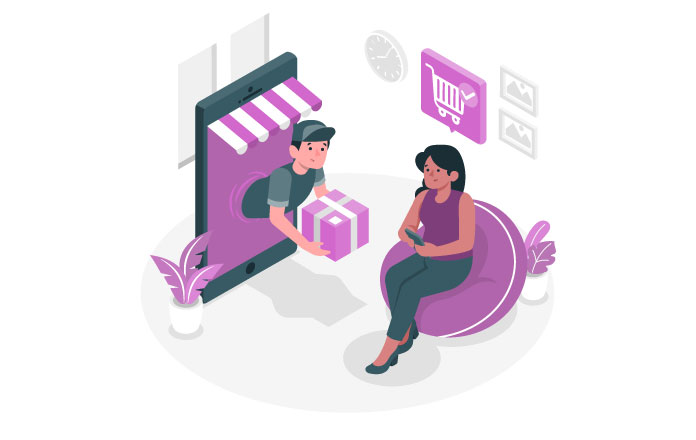In today’s digital world, many brands are thinking how they sell products. Previously, companies relied on retailers, distributors and third-party marketplaces to reach customers. But now, many brands are adopting direct-to-customer (D2C) model where brands sell directly to customers through their own websites, apps or social media channels. D2C removes the middleman. It gives companies more control over their products, pricing, and customer experience. And it’s not just for new brands even big manufacturers are now switching to this model. Why is this shifting? Consumer behavior have changed. People want fast, personalized service and better deals. It’s possible due to D2C model. At the same time, brands are looking to build relationships with their customers, collect data, and increase profits. D2C offers all of this and more.
Get to Know Your Customers Better
One of the best things about D2C is that you get to know your customers better. When you sell a product directly to them, you can see what they buy, when they buy it, how often they come back, and what they like or don’t like.
This information helps you to understand your customer’s behavior. You can use it to:
- Personalize emails and offers
- Improve product recommendations
- Fix problems quickly
- Build stronger loyalty
A study by Segment found that 71% of consumers feel confused when a shopping experience is impersonal. With D2C, you can fix that. You can deliver customized product experiences that make customers feel seen and valued.
Full Control Over Your Brand
In a traditional retail setup, your brand is one of many. The store decides how your product looks on the shelf, how it’s priced, and how it’s promoted. But in D2C, you’re in charge.
- Product descriptions and images
- Website design and user experience
- Packaging and delivery
- Pricing and promotions
This helps you to build a stronger brand identity. You can tell your brand story. The way you want whether it’s about sustainability, premium quality or local craftsmanship.
For example, BECO is a D2C brand that focuses on eco-friendly materials. On their website, they highlight how their products are made, showing their values clearly to customers. That’s much harder to do when selling through a retailer.
Higher Profits and Better Lifetime Value
By removing middlemen, D2C brands can generate more sales. You don’t need to pay retail commissions or share profits with distributors.
- Higher margins
- More flexibility to offer discounts
- More funds to reinvest in growth
D2C also helps increase customer lifetime value (CLV). If you brand own the relationship, you can build long-term loyalty through email campaigns, loyalty programs, and upselling strategies.
According to a study by Invesp, 88% of consumers prefer to buy directly from a brand if given the option. That’s a big opportunity to improve both sales and margins.
Build Real Relationships with Your Customers
When you sell through third parties, you rarely interact with your customers. You don’t hear their feedback, and you can’t thank them directly. D2C changes that.
- Send thank you notes or personalized messages
- Ask for feedback and reviews
- Answer questions in real time
- Reward loyal buyers
Adding a personal touch helps build trust. Customers feel closer to your brand. When customers are happy with your brand, they’re more likely to tell their friends and family, which helps your business grow through word of mouth. To keep that connection strong, many D2C brands use social media and online communities to stay in touch with their audience.
Move Faster and Be More Flexible
Retailers often have long planning cycles. If you want to launch a new product or test a new price, it can take months. But with D2C, you can move fast.
- Launch new products quickly
- Test prices, packaging, and messages
- Run limited-time campaigns
- Respond to market trends instantly
This flexibility is a big advantage in a fast changing world. Let’s say a product goes viral on social media. A D2C brand can create a special edition or promo within days. A traditional brand may miss the moment. Agility also helps during crises. For example, during COVID-19, many D2C brands adapted their supply chains and shifted to home delivery much faster than traditional ones.
Reach New Markets Without Borders
Due to online shopping, D2C brands can sell anywhere in the world. You are not required to use local stores or distributors.
With the right tools and partners, you can:
- Launch multilingual websites
- Accept global payments
- Ship to multiple countries
- Handle cross-border taxes and compliance.
D2C allows even small brands to think big. For example, a handmade product from India can now reach customers in Europe or the U.S. through social media or the brand website.
Common Challenges And How to Solve Them
D2C comes with challenges too. Here are some to watch for:
Getting new customers: Running ads and gaining attention can be expensive. Use content marketing, SEO, and partnerships.
Logistics: You need to manage storage, shipping, and returns. Partner with a reliable third party logistics provider.
Tech setup: Managing websites, payments, and data takes effort. Use trusted tools.
Conclusion:
The D2C model offers better customer experience, control, higher profits, faster action and global reach. It helps brands grow stronger and independent. But success in D2C requires focus. You need to build trust, deliver good experiences, and use smart technology. Start by understanding your audience and testing your approach step by step. If you’re ready to connect with your customers, grow your brand and take charge of your future, D2C might be the smartest move you make this year.




